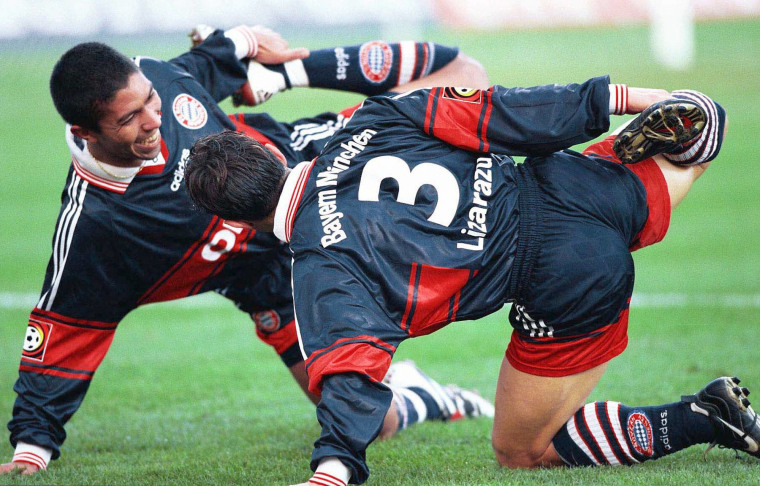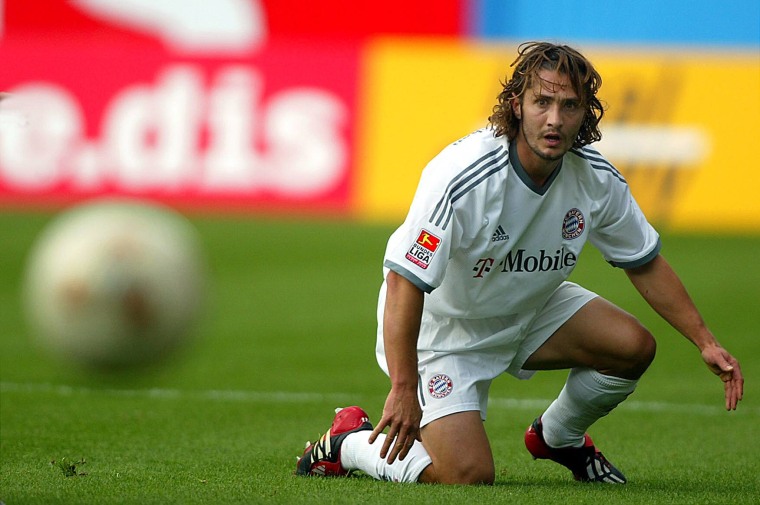
Soccer is becoming thoroughly globalized, and Latinos play a crucial role in this phenomenon.
Several players, including Latin American stars who play in top European clubs, have played a major role. The historically strong following of European clubs by Latin American fans, as well as the new, emerging market of U.S. soccer — where Hispanics are a major fan-base— are important factors in making the game truly cosmopolitan.
Given the rising levels of anti-globalization rhetoric in many parts of the world, the relevance of global football is even more remarkable. In this process, a few elite clubs are leading the way, in particular Germany’s FC Bayern Munich.
Bayern is now poised to conquer the Americas, as it seeks to win over more Hispanic fans in the US, solidify its following throughout Latin America, and increase the presence of Latino players in its ranks.
Currently, the largest FC Bayern fan club outside of Germany is in Guadalajara, Mexico. It has over 4600 members. German football was one of the first to be broadcast on TV in Latin America, with games being shown from Mexico to Bolivia to Chile in the 1970s. This long legacy is what Bayern is building on as it makes a strategic move to conquer more fans and compete with followers of Real Madrid and Barcelona, in particular, as well as other European clubs that are popular in Latin America.

There are over 300,000 official fan club members across the world and more than 650 million followers worldwide and 27 million followers in the US alone, many in well-organized fan-clubs with strong ties to the club's home base in Munich.
Bayern has seized on this passion for fútbol in Latin America in a way that could be a model for other premier clubs. It has set up education programs (including in the German language) for its fans in Latin America. It has built strategic partnerships with universities. This is happening also in 'Latino America,' that is, the Hispanic US soccer market."
Bayern has a New York City office and is reaching around ninety-thousand children through its education and soccer programs. The Hispanic market is critical for Bayern’s efforts, but it is also complementary to its ties to mainstream US culture, such as its partnership with Columbia University in New York.
As Rudolf Vidal, President of FC Bayern Americas, told me, there was a significant, concerted effort to change the nature of the German game around the year 2000.
The evolution of FC Bayern
Long known (and in some circles, admired) for a strict, dour, physical, and discipline-based style of play, German football underwent a radical shift. Millions of euros were invested to generate young, new players with a more creative style that would move away from the stolid form of former stalwarts such as Franz Beckenbauer and Lothar Matthäus.
The German soccer Federation (the DFB) and its premier league, the Bundesliga, invested to incorporate more artistic flair into players, emulating a more “Latin” style of play that is evident in national teams and leagues such as those of France, Brazil, and Argentina.
At the same time, more Latin American players came to join Bayern. Many were from Brazil, the land of ‘samba futebol,’ such as Zé Roberto and Giovane Élber, but also from Peru, like the prolific strikers Claudio Pizarro and Paolo Guerrero. With this change in the cultural style of the game itself within the club (and throughout Germany), by 2014 there were six Bayern players in the German national team that won the World Cup in Brazil in the final against Lionel Messi’s Argentina.
Apart from Latin American players, Europeans have also contributed to Bayern's more "global" image.
One of Bayern’s most emblematic players of recent times, Bixente Lizarazu was recently in New York City to watch Der Klassiker, the clash between the Bavarian club and its arch-rival Dortmund, at an Adidas viewing party in the Big Apple. In a goal-filled thriller, Bayern won the game by four goals to one in its home stadium, the 75,000 capacity-filled Allianz Arena.

Lizarazu was born in Basque country, in Saint-Jean-de-Luz, a small border town between France and Spain. He went on to eventually become one of the most accomplished footballers of his generation, winning all the main trophies that international football has to offer. His personal tale is representative of the rise of FC Bayern Munich, the most famous German soccer club, from national glory to transnational prominence in the new, globalized era of world soccer.
At the age of fourteen, Lizarazu was spotted by scouts of Girondins de Bordeaux, one of France’s best teams. He had been a fan of its storied past, with legendary players such as Alain Giresse, who led France to its first major tournament win as European champions in 1984. Small in size, standing at just five-foot-seven inches, Bixente showed that he could scrap with the best of them. He would reach the 1996 UEFA Cup Final with Bordeaux, only to lose to his future club, FC Bayern. It is during that game that Bayern scouts were first impressed by Bixente. In 1997, after a brief stint at the famous Basque club Athletic Bilbao of Spain (which only allows players of Basque origin in its roster), he moved to Bavaria, being one of the first Frenchmen to play for the German giants of club Fussball.
The arrival of Bixente Lizarazu coincides roughly with a transformation of German soccer.
Through its players and through the cultivation of a diverse fan base, the German club is thus seeking to become the pre-eminent global football club, all while retaining its original culture grounded in Bavaria.
As Lizarazu told me, it is quite normal and common for someone to support their local team, say Boca Juniors in Buenos Aires, but also to be a fervent Bayern Munich fan on the European stage. Throughout Mexico, Brazil, Argentina, and Colombia, there are over 71 million FC Bayern followers.
Lizarazu emphasizes that this is an important task that he has as an “Ambassador” for the club: to promote its global brand while underscoring the strong roots and values in the club’s history.
Global soccer is now a multi-billion dollar industry, in which brand name and brand loyalty play a fundamental role. There is intense competition for this loyalty, from ‘superpower’ clubs such as Barcelona and Real Madrid, but also those like Chelsea, A.C. Milan, and now the petrodollar-rich, Qatar-backed Paris Saint-Germain FC.
How these clubs develop ways promote global brand loyalty with unique perspectives is a cardinal question for the future of the game and it attendant business empires.
In this competition, Latin America and the US are strategic territories to be conquered. The US, Mexico, and Canada have made a joint bid for the 2026 World Cup. With this historic three-country bid, the World Cup will be one of the most truly planetary of human events, even as anti-globalization foes that rail against transnational agreements such as NAFTA gain ground.
Once seen as repositories of local, provincial identities, professional football clubs are now the agents of cosmopolitanism in the Americas and beyond. And they would not be able to do this without solid U.S. Latino and Latin American support.